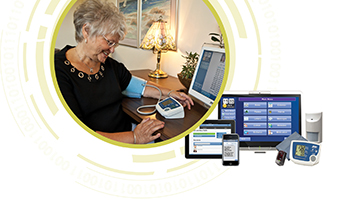Technological advances highlighted in this issue include nasal cells used in a spinal cord transplant, telehealth kiosks, tips to control technology vendor demos, the risk of medical device hacking, a robotic exoskeleton whose developer is seeking approval for home use, and more.

Nasal Cells Used in Spinal Cord Transplant
Scientists have reported that cell transplants combined with other interventions have enabled a man with a severed spinal cord to walk again.
The case involves a 38-year-old man who sustained traumatic transaction of the thoracic spinal cord at upper vertebral level Th9. There was an 8-mm gap between the spinal cord stumps. The stumps remained connected only by a 2-mm rim of spared tissue. At 21 months after injury, the patient presented symptoms of a clinically complete spinal cord injury (American Spinal Injury Association class A-ASIAA).